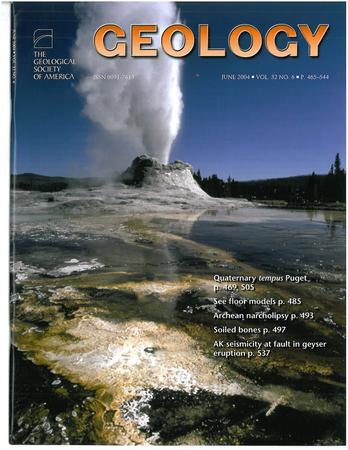海山对俯冲板块水化作用的影响
IF 4.6
1区 地球科学
Q1 GEOLOGY
引用次数: 0
摘要
海山的俯冲作用对上覆板块的弧火山活动、地震和构造变形有很大的影响,但对海山在俯冲带进入板块的弯曲和水化过程中的作用了解甚少。我们介绍了哥斯达黎加北部近海中美洲海沟三条剖面的地震层析成像结果。地壳和上地幔纵波速度向海沟方向减小,速度减小始于距海沟轴线约70 km处,表明进入板块发生弯曲断裂、蚀变和水化作用。上地幔中最显著的低速异常为7.6 ~ 7.8 km/s,发生在外隆起的海山下方,表明水化作用增强,含水量为~ 2.4 wt%,而远离海山的俯冲板块则为~ 1.1 ~ 1.2 wt%。在海山附近,极低的热流(<10 mW/m2)支持强烈的海水热液补给。我们的研究结果表明,俯冲海山在俯冲前有效地增加了海洋地壳的渗透率,促进了海水向地幔的输送,控制了广泛的蛇纹岩化,并可能促进水回循环到地球内部。本文章由计算机程序翻译,如有差异,请以英文原文为准。
Impact of seamounts on the hydration of subducting plates
The subduction of seamounts greatly affects arc volcanism, earthquakes, and tectonic deformation of the overriding plate, but the role of seamounts during bending and hydration of the incoming plate at subduction zones is poorly understood. We present seismic tomographic results along three profiles from the Middle America Trench offshore northern Costa Rica. The crustal and upper mantle P-wave velocities decrease toward the trench, with the onset of velocity reduction at ∼70 km from the trench axis, indicating bend-faulting, alteration, and hydration of the incoming plate. The most prominent low-velocity anomaly of 7.6−7.8 km/s in the upper mantle occurs beneath a seamount at the outer rise, indicating enhanced hydration with ∼2.4 wt% water content, compared to ∼1.1−1.2 wt% in the subducting plate away from the seamount. Near the seamount, extremely low heat flow (<10 mW/m2) supports vigorous hydrothermal recharge of seawater. Our results reveal that subducting seamounts efficiently increase the permeability of the oceanic crust prior to subduction, facilitate the transport of seawater into the mantle, exert control on widespread serpentinization, and potentially promote water recycling back into Earth’s interior.
求助全文
通过发布文献求助,成功后即可免费获取论文全文。
去求助
来源期刊

Geology
地学-地质学
CiteScore
10.00
自引率
3.40%
发文量
228
审稿时长
6.2 months
期刊介绍:
Published since 1973, Geology features rapid publication of about 23 refereed short (four-page) papers each month. Articles cover all earth-science disciplines and include new investigations and provocative topics. Professional geologists and university-level students in the earth sciences use this widely read journal to keep up with scientific research trends. The online forum section facilitates author-reader dialog. Includes color and occasional large-format illustrations on oversized loose inserts.
 求助内容:
求助内容: 应助结果提醒方式:
应助结果提醒方式:


